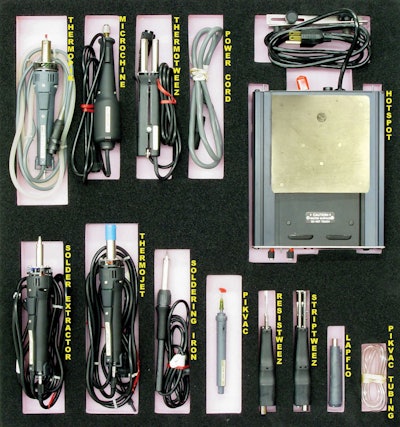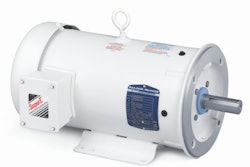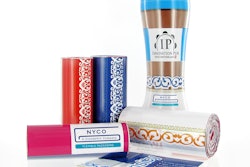The majority of stories in Packaging World focus on how products are protected on the outside by packaging. But this article reports on flexible foam that’s used inside a custom-made carrying case to protect valuable contents. Each carrying case is subsequently packed in an outer corrugated shipper for distribution.
The packager in this instance is C.H. Ellis Co., an Indianapolis-based maker of stock and custom carrying cases for instruments or measuring devices for the military; for field service and repair industries; for medical devices and test instruments; and for government agencies. Made of plastic or aluminum, these custom cases typically measure 24 x 20 in. x up to 6 in. deep. Cases can carry products or instrumentation often worth up to $10,000. To protect these valuable products, C.H. Ellis works closely with HSM, a global manufacturer of integrated solutions and components to the transportation, furniture, bedding, and a growing number of diversified markets; and its Hi-Tech Foam product brand of foam components for automotive, appliance, medical, aviation, police and military applications.
The two companies have partnered for years, with their more recent collaborations focusing on “shadow boxing” and the use of cross-linked polyolefin foam manufactured by Zotefoams plc.
Think of shadow boxing as an Oreo cookie without one of its outside cookie layers. If you cut through the white filling you would see the dark cookie at the bottom. For the foam used in the C.H. Ellis cases, two different thicknesses and colors of foam are heat-bonded together, with cavities custom cut to contain individual products, tools, devices, etc. When you look at the top of that foam you see one color, like the white cookie filling. Underneath, however, there is a different color, so if the C.H. Ellis customer notices this color, it indicates that the product, tool, device, etc. is missing from the case.
Bob Able, president of C.H. Ellis, explains, “We do a lot of government jobs that involve the use of materials for identification and bond purposes. They need the material to be anti-static or conductive. So we may have a pink-colored foam with a black-colored foam on top. When we lay the customer’s instruments into the foam, they go into a drawer, or in a workstation. When they pull the drawer open there is this foam with all the instruments in it. Because of the color differences, they can tell if there are any instruments missing, which is a big problem because a lot of them are very expensive. With the foam, the customer can take inventory quickly and know if they’ve left one instrument out in the work area, and can go get it and place it back in there. Then they can close the workstation and lock it up for the evening.”
This application refers to Foreign Object Debris, or FOD, whereby the C.H. Ellis customer needs to prevent expensive objects from being left out, lost, or pilfered. That’s why the two different-colored foams, or “shadow boxing” becomes so important.
Zotefoams, explains HSM’s John Metaxas, is a manufacturer of cross-linked polyolefin foams widely used in packaging. “They are unique because they expand their foams using pure nitrogen in a unique autoclave expansion process, whereas most expanded foams use a simple chemical reaction. For instance, a polyethylene foam would use butane to help the foam expand. Over time, that chemical will escape from the foam. Zotefoams, with pure nitrogen, has a very consistent cell structure, so the surface of the foam is uniform, even when you cut it. It gives the end user a nice, aesthetic appeal. But on top of that, when you are dealing with electronic, military, or medical devices, Zotefoams is preferred because the use of only nitrogen offers engineers a level of comfort knowing that there won’t be any chemical reaction or possible outgassing of unreacted chemical agents to affect their product. For instance, there are many foam products that come from overseas, and it may be difficult to get a technical data sheet that lists exactly what type of chemical and how much is being used to produce those foams. Zotefoams is extruded in slab form in England, then shipped to their manufacturing plant in Florence, Kentucky for final expansion,” he says. HSM is an authorized fabricator and distributor of Zotefoams, fabricating the foam to specific sizes and shapes required by C.H. Ellis.
Another important point of differentiation regarding Zotefoams, says Metaxas, is that it is a closed-cell foam similar to the type of foam you would see in a baseball helmet or on a wresting mat. “It’s very firm and it will support heavy products like hammers,” he says. “Polyester is an open-cell foam and it has the consistency of a sponge. If you were packaging a cell phone that’s fragile and lightweight, you would want it to be an open-cell foam so that if it was dropped the foam would move like a shock absorber and insulate the product from shock. Zotefoams is closed-cell foam that’s very firm. So that’s where Bob and I work together in all of the different markets his customers are in. Bob comes to HSM, and together we look at the different types of foams, whether they are open-cell or closed-cell, to determine the different densities that would work best for a particular C.H. Ellis customer application.”
The line at C.H. Ellis
Able says partnering with HSM and the Hi-Tech product brand is essential, because each case it produces is customized for the end-user customer. Cases are not produced in large quantities, but often in orders of five or 10.
“We are manufacturing carrying cases from high-density polyethylene, vinyl, and other materials that can be used for everything from test and measuring equipment to medical equipment, for tools or instruments used out in the field. That’s where the packaging comes in. We customize the inside of the case to fit the particular instruments that the company might send us. We do that with foams and that’s where HSM and the Hi-Tech brand comes in.”
Cases are packaged at C.H. Ellis’ headquarters and manufacturing facility in Indianapolis on four lines, each of which represents a different product line, be it foam or a molded or fabricated case. A fourth miscellaneous line involves wine foam packaging without a case. At the end of each line, workers manually place foam into the cases before they are closed and placed into corrugated shippers for transport to customers.
Able says the lines vary in length, up to 300-ft long, usually in a “U” shape, and are staffed five days/wk, with five to eight-hr/day production. There is no automatic packaging equipment used in the process.
Given the manual packaging approach, what are the key challenges in packaging these cases? Able boils it down to educating customers. “We need to select the proper case and foam combination to give the product adequate protection for its value. Some people have a case that could be carrying $10,000 worth of equipment, yet some people don’t see the value in spending $250 for the case or the packaging. That’s the biggest challenge we have. If you damage that $10,000 piece of equipment, the $250 for that case is pretty good insurance.” The custom cases are typically sold either directly to an OEM or to their distribution facilities.
Fabricating reduces costs
HSM’s Metaxas notes that C.H. Ellis’ products sell into a wide variety of markets. “So when Bob’s customers come to him with a unique challenge, it may require meeting a military or an anti-static specification, and that’s where we work with them in partnership to make the best case interior that meets the customer specifications and that not only protects the products but also gives an economic advantage to C.H. Ellis because we can produce smaller quantities for them without requiring more expensive tooling,” he says.
Unlike large-scale production volumes involving tens of thousands of pieces that would be more efficiently done by creating more costly die-stamping tooling, the small volumes required by C.H. Ellis for its customers allow HSM to use waterjet cutting to make prototypes, which work especially well when customers request changes that might meet marketing or engineering objectives. Says Metaxas, “The waterjet is an advantage because you don’t have to construct a tool, so you save on that cost. You also save on the lead time. So if somebody says, ‘I want to change my package to add a couple of components. What would that look like?’ If I had to build a tool I would say, ‘Well, it would take three weeks to get a tool, and x number of dollars, let’s say to die-stamp out that shape.’ But with waterjet we can take the existing CAD drawing, make the modifications and within 24 hours we can have a prototype that is an exact representation of the material and what it would look like in that particular case.”
The waterjet cutting is done at HSM’s facility in Kentucky on a new machine from WARDJet. “So the benefit that the customer gets is that when they do have an idea and when they do have a change they want presented, we can make a change and then give them an updated package so that they can actually put their products in there and touch and feel it and pass it around the conference room,” adds Metaxas.
Able says C.H. Ellis has more than 75 different molds for different carrying cases. The company tries to get customers into one of those existing case sizes and customize the foam used inside. “But if more customization is required, with waterjet cutting there is no tooling,” says Metaxas. “All you do is draw the product in CAD, create the foam layout, and send it to the waterjet machine and then it automatically will cut the foam based on that. Again, there are no tooling costs involved.”


























